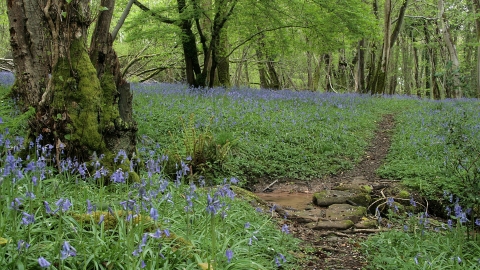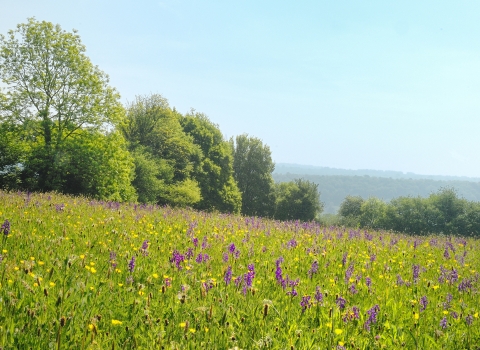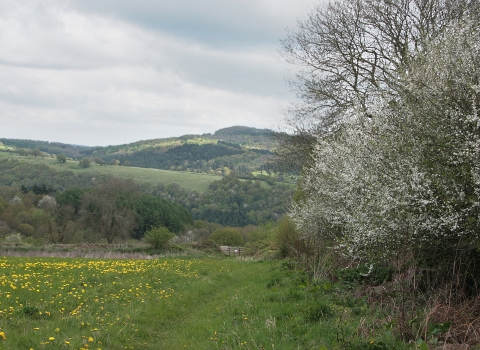Know before you go
Dogs
When to visit
Amseroedd agor
Open at all timesAmser gorau i ymweld
All yearAm dan y warchodfa
This beautiful ancient woodland sits high above the western bank of the River Wye. The dappled light and burbling streams create a lush and leafy woodland floor, with masses of mosses, ferns and liverworts covering the fallen trees, tree stumps and boulders.
In spring, bluebells, ramsons and common dog-violets carpet the floor, joined by the golden hues of yellow archangel and lesser celandine. This leafy paradise is home to a wonderful variety of woodland birds throughout the year. All three species of woodpecker live here, joined in the spring by both pied and spotted flycatchers, who journey here from Africa to breed in the insect-rich woods. Magnificent hawfinches and goshawks can occasionally be seen here too.
History
The reserve feels wild and untamed, but it has been managed and exploited for its materials by humans for centuries. The large, many-stemmed trees you can see throughout the wood are relics of a traditional form of management known as ‘coppicing’. This process of cutting trees down to ground level encourages them to vigorously sprout new shoots, which can be harvested again and again.
Another striking feature of the reserve is the remains of up to 20 quarries, cut into the rocky outcrop along the western edge to expose quartz conglomerate, known locally as ‘pudding stone’. This stone was a popular choice for making millstones and records show this craft has been practiced in the area since medieval times. The finished millstones would’ve been carefully rolled down channels to the River Wye, where they were loaded onto boats for transportation. Several of these great, grey millstones still lie strewn throughout the site.
Directions
By car
From Monmouth, take the B4293 south (signposted ‘Mitchell Troy/Trellech’). After approximately 1.5km, take the turning that forks left for ‘Penallt/Trellech/Chepstow’. Continuing on for about 3km, take the first left turning, signposted ‘Penallt’. At the crossroads in Penallt village, go straight on, down Lone Lane. After about 1.5km, look out for a yellow grit bin on the right (just before the road bends round to the left, near a house). There is limited parking for one car on the roadside.
Enter the woods at the grit bin and follow the path for about 40m to reach the reserve entrance.
Near the reserve
Prisk Wood is very close to Pentwyn Farm and Wyeswood Common, whilst New Grove Meadows lies slightly further west and Margaret’s Wood to the south.
The surrounding Wye Valley is excellent walking country, with plenty of public footpaths to explore, including the scenic Wye Valley Walk.
Habitat
Cysylltwch â ni
Dynodiad amgylcheddol
Join us!
Help protect and support our beautiful nature reserves and local wildlife. Join our community of members today!



